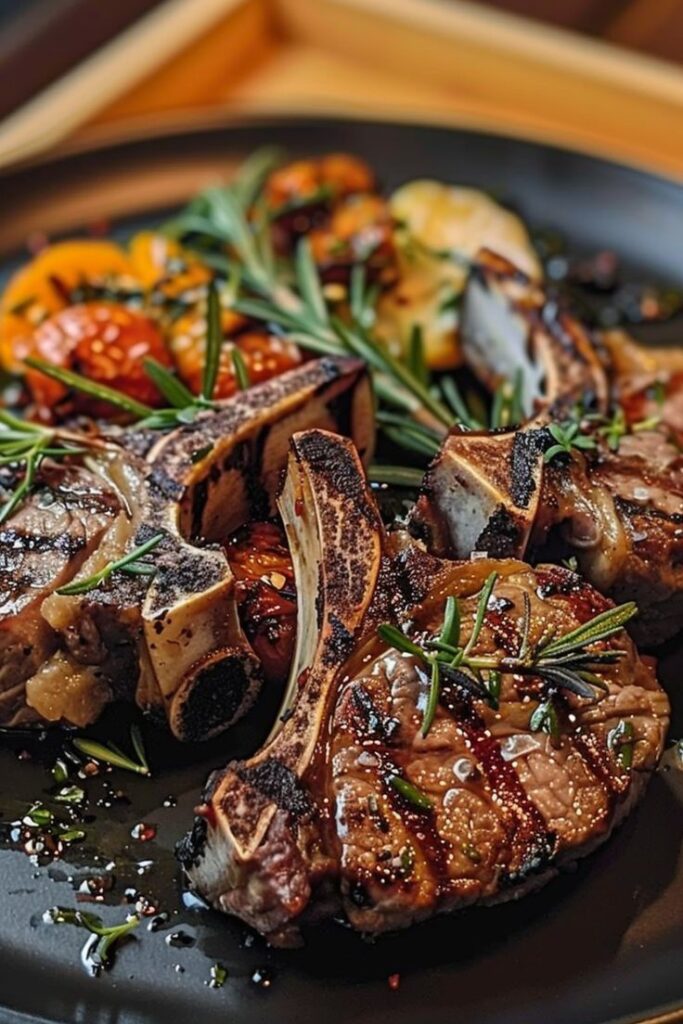
Few dishes capture the elegance of a special dinner and the comfort of a hearty meal quite like rosemary garlic lamb chops with roasted veggies. The sizzling sound as the lamb hits the hot pan, the aroma of fresh herbs mingling with garlic, and the colorful spread of roasted vegetables together create a dish that feels equally at home on a festive table or a cozy weeknight dinner. This recipe is more than just instructions; it’s an exploration of tradition, flavor pairing, and the craft of cooking meat to perfection.
Lamb chops have long held a place in celebratory dining across the world, especially in Mediterranean and European cuisines. The combination of rosemary and garlic isn’t arbitrary — it’s one of those timeless partnerships in cooking that transforms the flavor of lamb from simple to extraordinary. The herbs cut through the richness of the meat, garlic adds savory depth, and roasting vegetables alongside creates balance on the plate.
This dish is versatile enough for both beginners eager to master lamb for the first time and seasoned cooks looking to refine their skills. It teaches you about marinating, searing, roasting, and pairing flavors thoughtfully. Once you’ve cooked it, you’ll have not just a recipe but also techniques that you can adapt to countless variations of lamb and vegetable preparations.
Overview of the Dish and Why It Works
The essence of rosemary garlic lamb chops lies in the natural compatibility of flavors. Lamb has a rich, slightly earthy taste that welcomes bold seasonings. Rosemary, with its pine-like aroma, penetrates the meat beautifully, while garlic lends both sharpness and sweetness when cooked. Together, they balance lamb’s depth without overpowering it.
Roasted vegetables make the perfect partner because they add texture, color, and nutritional value. As they caramelize in the oven, their natural sugars intensify, creating a sweet-savory contrast to the savory lamb chops. The pairing is not only delicious but also practical — you can roast the vegetables while marinating or cooking the meat, allowing the elements of the dish to come together seamlessly.
This meal also embodies the Mediterranean philosophy of cooking: fresh herbs, quality olive oil, seasonal vegetables, and simple preparation that lets ingredients shine. Whether you’re preparing dinner for family, a romantic evening, or a festive gathering, this dish delivers on both flavor and presentation.
Brief History and Cultural Significance
Lamb has a storied history in global cuisine. In many cultures, it symbolizes abundance and celebration. In Greece, lamb is central to Easter feasts, often roasted with herbs and served with fresh sides. In the Middle East, lamb is an everyday staple, slow-cooked in stews or grilled with spice blends that highlight its natural richness. Across Europe, especially in France and Italy, lamb chops are considered a delicacy, often cooked with minimal seasoning to showcase their quality.
Rosemary and garlic, both Mediterranean staples, have been paired with lamb for centuries. Rosemary’s sturdy leaves withstand high heat and long cooking, releasing aroma slowly, while garlic, once roasted or sautéed, mellows and deepens in flavor. Together, they became a culinary tradition passed down across generations, each region putting its unique stamp on the combination.
Today, rosemary garlic lamb chops with roasted veggies represent not just a recipe but also a piece of cultural heritage. Cooking this dish connects you to the timeless kitchens of the Mediterranean, where simplicity and freshness created flavors that endure to this day.
Preparation Phase and Tools to Use
Before diving into the cooking process, preparation is key. Having the right tools and understanding their role ensures smoother cooking and better results.
Essential Tools and Equipment
- Sharp chef’s knife – for trimming fat, slicing vegetables, and chopping herbs.
- Cutting board – preferably wooden or plastic, dedicated to meats and vegetables.
- Mixing bowls – for marinades and tossing vegetables.
- Measuring cups and spoons – to keep seasoning balanced.
- Baking sheet or roasting pan – for even roasting of vegetables.
- Grill pan, cast-iron skillet, or outdoor grill – for cooking the lamb chops.
- Instant-read thermometer – the most reliable tool for checking doneness.
- Tongs – for flipping meat without piercing and losing juices.
- Parchment paper or foil – for easy cleanup and preventing sticking.
- Serving platter – to arrange and present the finished dish.
Importance of Each Tool
Each piece of equipment plays a vital role. The thermometer prevents guesswork, ensuring lamb is perfectly cooked to your preferred doneness. Tongs protect the meat’s integrity by avoiding punctures. A sturdy roasting pan allows vegetables to crisp rather than steam, while parchment helps maintain texture and simplifies cleanup. Having sharp knives not only makes prep faster but also ensures precision cuts for uniform cooking.
Preparation Tips
- Select lamb chops with good marbling and thickness — about 1 to 1.5 inches ensures they stay juicy.
- Trim excess fat or silver skin for even cooking.
- Pat lamb dry before seasoning; moisture prevents a good sear.
- Chop herbs just before use for maximum fragrance.
- Let meat come to room temperature before cooking; this avoids uneven doneness.
- Preheat pans and oven before placing food inside — temperature control is crucial.
- Organize ingredients ahead of time (mise en place) to streamline the process.
Ingredients List with Measurements
For 4 servings:
For the Lamb Chops
- 8 lamb loin or rib chops (about 1–1.5 inches thick)
- 3 tablespoons fresh rosemary, finely chopped
- 4 garlic cloves, minced
- Zest of 1 lemon
- 3 tablespoons extra virgin olive oil
- 1 teaspoon kosher salt
- ½ teaspoon freshly ground black pepper
- Optional: 1 teaspoon fresh thyme or oregano
For the Roasted Vegetables
- 2 carrots, peeled and cut into chunks
- 1 red bell pepper, sliced
- 1 zucchini, sliced into half-moons
- 1 red onion, cut into wedges
- 200 g baby potatoes, halved
- 2 tablespoons extra virgin olive oil
- 1 teaspoon fresh rosemary, finely chopped
- ½ teaspoon salt
- ¼ teaspoon black pepper
Step-by-Step Cooking Instructions
Marinating the Lamb
- In a bowl, mix rosemary, garlic, lemon zest, olive oil, salt, and pepper.
- Rub the mixture thoroughly over both sides of the lamb chops.
- Place the chops in a dish, cover, and refrigerate for at least 30 minutes. For best results, marinate for 4–6 hours or overnight.
- Remove the lamb from the fridge about 30 minutes before cooking to bring it to room temperature.
Preparing the Vegetables
- Preheat oven to 400°F (200°C).
- Toss carrots, bell pepper, zucchini, onion, and potatoes with olive oil, rosemary, salt, and pepper.
- Spread the vegetables on a baking sheet in a single layer. Overcrowding causes steaming instead of roasting.
- Roast for 25–30 minutes, stirring halfway through to ensure even browning.
Cooking the Lamb Chops
- Heat a grill pan, cast-iron skillet, or outdoor grill over medium-high heat until hot.
- Place the lamb chops in the pan and sear for 2–3 minutes per side. Adjust timing depending on thickness and desired doneness.
- Use an instant-read thermometer to check internal temperature:
- Rare: 125°F (52°C)
- Medium-rare: 135°F (57°C)
- Medium: 145°F (63°C)
- Well-done: 160°F (71°C)
- Once cooked, transfer chops to a plate and rest for 5 minutes to redistribute juices.
Making a Simple Pan Sauce (Optional)
- After cooking the lamb, deglaze the pan with a splash of wine or broth.
- Scrape up the browned bits, then reduce the liquid slightly.
- Add a knob of butter and fresh herbs to finish the sauce.
- Drizzle over the lamb before serving.
Plating and Serving
- Arrange roasted vegetables on a large platter or individual plates.
- Place lamb chops on top or alongside the vegetables.
- Drizzle with pan sauce or garnish with fresh rosemary and lemon slices.
- Serve immediately while hot and fragrant.
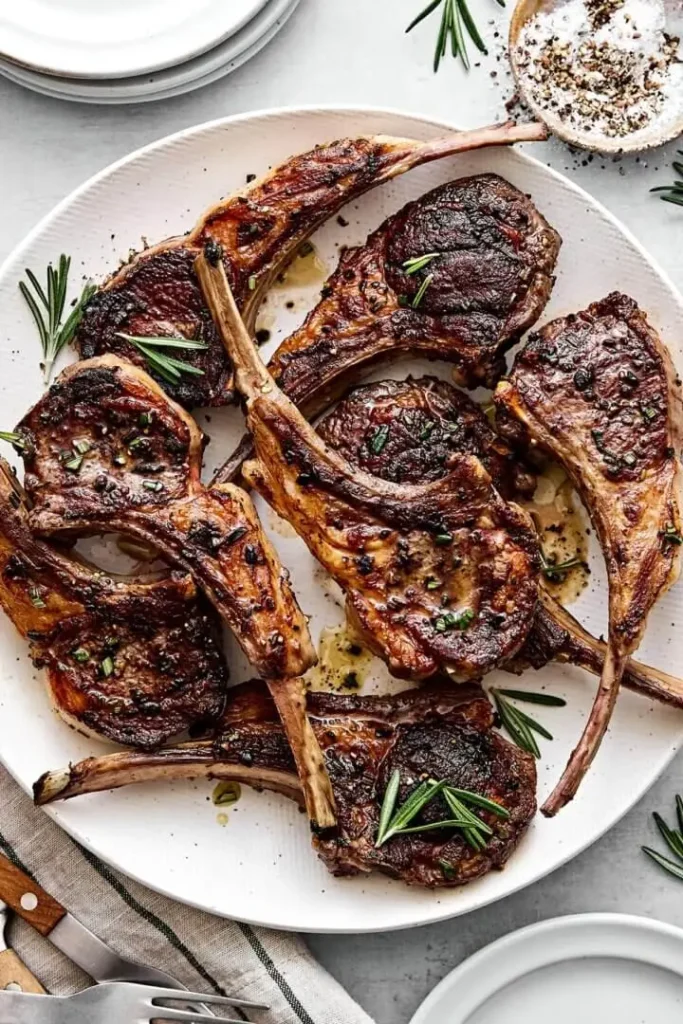
Side Dish Recommendations
A plate of rosemary garlic lamb chops with roasted veggies already brings comfort and satisfaction, but the meal becomes even more memorable when accompanied by complementary side dishes. These additions can add freshness, texture, richness, or brightness to balance the bold flavor of lamb. Here are eight side dish ideas, each with its own character and preparation tips.
Creamy Mashed Potatoes
Mashed potatoes are one of the most classic accompaniments to lamb chops. Their creamy texture pairs beautifully with the rich meat and herbaceous flavors of rosemary and garlic. Yukon Gold potatoes work best because of their naturally buttery texture. For added depth, warm milk or cream with crushed garlic and a sprig of rosemary before mixing it into the mash. Finish with a generous pat of butter, and you’ll have a silky, comforting base that contrasts the seared edges of the lamb.
Minted Peas
Peas may seem simple, but when cooked briefly and tossed with butter, lemon juice, and freshly chopped mint, they transform into a refreshing side that cuts through the richness of lamb. This dish has roots in traditional British cooking, where lamb and mint often go hand in hand. The slight sweetness of peas balances the savory meat, and the mint brings a cool, aromatic lift.
Lemon Herb Couscous
Couscous offers a light and fluffy alternative to heavier starches. Cooked quickly in broth and tossed with olive oil, lemon zest, and fresh herbs like parsley and dill, it becomes a vibrant side that soaks up the juices from the lamb and roasted vegetables. Pearl couscous, with its larger grains, offers a slightly chewy texture and works especially well for those who enjoy more bite in their grains.
Sautéed Green Beans with Garlic and Almonds
Green beans bring crunch and color to the plate. Quickly sauté them in olive oil with slivers of garlic until tender-crisp, then sprinkle toasted almonds on top for nuttiness. This dish adds freshness while keeping with the Mediterranean theme. It also cooks quickly, making it an excellent option when you’re juggling multiple dishes in the kitchen.
Spinach and Pomegranate Salad
Lamb dishes benefit from something light and tangy alongside them, and a salad with fresh spinach leaves, pomegranate seeds, red onion, and a lemon-olive oil dressing delivers just that. The juicy burst of pomegranate seeds adds sweetness and acidity, while spinach contributes earthiness. This salad not only tastes bright but also adds vibrant red and green hues to the meal’s presentation.
Caramelized Brussels Sprouts with Hazelnuts
Brussels sprouts roasted until golden and caramelized develop a sweetness that contrasts the savory lamb. Toss them with a touch of balsamic vinegar and finish with chopped hazelnuts or pecans for crunch. The balance of nutty, sweet, and savory notes makes this side dish memorable and hearty without overshadowing the main course.
Mediterranean Bean Salad
A chilled salad of cannellini beans, chickpeas, red onion, parsley, and lemon vinaigrette provides protein and freshness. This side is ideal if you want to prepare something ahead of time. Its zesty flavor and firm texture complement the tender lamb, while the beans add satiety, ensuring the meal is filling without being overly heavy.
Lemon Orzo Pilaf
Orzo pasta, cooked like rice and tossed with olive oil, lemon juice, and herbs, makes a bright and versatile side dish. Its small, rice-like shape soaks up the lamb’s pan juices beautifully. Add sautéed spinach or grated Parmesan to enrich the flavor, depending on the mood of the meal.
Together, these side dishes give you a wide spectrum of choices: creamy, crunchy, fresh, tangy, or nutty. Pairing one or two with your lamb chops and roasted vegetables ensures a complete dining experience.
Nutritional Information and Health Benefits
Cooking lamb with roasted vegetables creates a dish that is flavorful, satisfying, and surprisingly nutrient-dense. Lamb is rich in protein, essential for muscle repair and satiety, while vegetables supply vitamins, minerals, and dietary fiber that promote digestive health.
Lamb Chops
Lamb is a powerhouse of nutrients. It provides high-quality protein, iron, zinc, and vitamin B12. Iron from lamb is heme iron, which is more easily absorbed by the body compared to non-heme iron from plant sources. Zinc supports immune function, while B vitamins assist in energy metabolism. Moderate amounts of lamb can be part of a balanced diet, especially when paired with plenty of vegetables.
Rosemary and Garlic
Rosemary contains antioxidants and anti-inflammatory compounds that may support overall health. Garlic is known for its immune-boosting properties and its ability to support heart health. Beyond flavor, these herbs contribute to wellness when incorporated regularly into meals.
Roasted Vegetables
Roasting vegetables like carrots, zucchini, peppers, and potatoes caramelizes their natural sugars, but their nutritional value remains intact. Carrots provide beta-carotene, a precursor to vitamin A, which supports vision and skin health. Bell peppers add vitamin C, while zucchini offers hydration and fiber. Potatoes contribute potassium and energy-supporting carbohydrates. Together, these vegetables provide a wide array of nutrients, balancing the richness of lamb.
Balancing the Meal
While lamb is higher in saturated fat than chicken or fish, balancing portion sizes and pairing with fiber-rich vegetables makes the overall meal both nutritious and satisfying. Cooking with olive oil adds heart-healthy unsaturated fats. Portioning the plate with more vegetables than lamb is an easy way to keep the meal aligned with health-conscious goals.
Common Mistakes to Avoid and How to Perfect the Recipe
Even experienced cooks encounter challenges when preparing lamb. Knowing the common pitfalls ensures success every time.
Overcooking the Lamb
One of the most frequent mistakes is leaving lamb chops on the heat too long. Overcooked lamb becomes tough and dry, losing its natural juiciness. The solution is to use an instant-read thermometer and aim for medium-rare to medium doneness. Resting the meat after cooking allows juices to redistribute, keeping the chops moist.
Undercooking or Uneven Cooking
Lamb chops that are cooked unevenly often result from inconsistent thickness or cold meat going straight to the pan. Allow the chops to come to room temperature before cooking, and choose chops of similar size for even doneness. Thicker chops can be seared first and finished in the oven to ensure they cook through without burning.
Burning Garlic in the Pan
Garlic burns quickly, turning bitter and unpleasant. To avoid this, mix garlic into the marinade or add it later in the cooking process rather than exposing it to high heat for too long. When making a pan sauce, cook garlic gently to release its flavor without scorching it.
Vegetables Turning Soggy
Roasted vegetables sometimes end up mushy if they are overcrowded on the baking sheet. Spread them out in a single layer with space between pieces to allow hot air to circulate. Uniform cutting also ensures even cooking, while flipping them halfway through prevents one side from charring while the other stays pale.
Underseasoning the Meat
Lamb can taste bland without proper seasoning. Salt the chops adequately before cooking, and let the herbs and spices penetrate the meat through marination. Fresh rosemary and cracked pepper add layers of flavor that highlight lamb’s natural richness.
Forgetting to Rest the Meat
Cutting into lamb immediately after cooking causes juices to spill out, leaving the meat dry. Rest the chops for at least five minutes under loose foil before serving. This small step dramatically improves tenderness and flavor.
Choosing Poor Quality Meat
Not all lamb chops are created equal. Thin chops tend to overcook quickly, and meat with little marbling lacks flavor. Choose cuts that are at least one inch thick with visible marbling. Bone-in chops are often juicier and more flavorful than boneless cuts.
Skipping the Sauce
While lamb chops taste wonderful on their own, a simple pan sauce made from deglazing the skillet with wine, broth, or lemon juice elevates the dish. Finishing with butter and herbs ties together the flavors of the entire meal, turning it from good to exceptional.
Mastering rosemary garlic lamb chops with roasted veggies requires attention to detail, but once you’ve avoided these common mistakes, the recipe becomes second nature. With practice, you’ll be able to judge doneness by feel, balance flavors intuitively, and serve a meal that’s both beautiful and delicious.
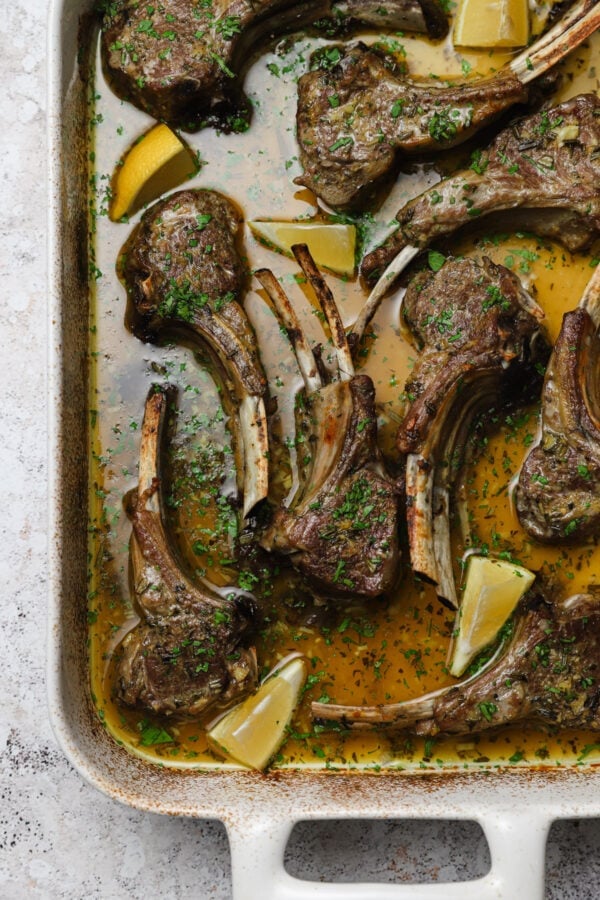
Tips, Notes, and Variations
Cooking rosemary garlic lamb chops with roasted veggies is already a delight, but once you’ve mastered the basics, experimenting with tips and variations can elevate the dish to new heights. Here are some extended ideas to help you customize and refine your cooking.
Bone-In vs. Boneless Lamb Chops
Bone-in lamb chops usually deliver more flavor because the bone helps retain juices and conducts heat evenly. They also look more impressive on the plate. Boneless chops, however, are easier to portion, marinate, and cook quickly. If presentation is your priority, go bone-in. If convenience is your goal, choose boneless.
Herb Variations
While rosemary is a classic pairing, other herbs can shift the flavor profile. Thyme offers a subtle earthiness that blends well with garlic. Oregano gives the dish a Mediterranean feel. Tarragon adds a faint licorice note for a French twist. Mint, often paired with lamb in sauces, can also be used fresh in the marinade for brightness. Mixing herbs keeps the dish versatile and seasonal.
Citrus Enhancements
Lemon zest is common, but don’t hesitate to experiment with orange or lime. Orange zest imparts a sweeter, more floral character, while lime offers a sharper edge. A quick squeeze of citrus juice just before serving can brighten the entire dish, balancing the richness of the lamb and roasted vegetables.
Spice Additions
Spices can add warmth and complexity. Smoked paprika provides subtle smokiness. Cumin brings earthy depth, while crushed red pepper flakes give heat. Coriander seed adds citrusy undertones. Just a pinch of these can transform the flavor without overpowering the rosemary and garlic.
Different Cooking Methods
Lamb chops can be prepared in more ways than grilling or pan-searing. Try sous-vide for precision cooking and guaranteed tenderness, finishing with a quick sear for crust. Use an air fryer to achieve crispy edges with less oil. Baking in the oven with a broil finish is a low-effort method for cooking multiple chops at once.
Alternative Vegetables
The roasted vegetables can be varied endlessly. Swap carrots for parsnips, zucchini for eggplant, or potatoes for sweet potatoes. Seasonal vegetables like squash in autumn or asparagus in spring keep the dish fresh throughout the year. Root vegetables provide heartiness, while leafy greens roasted briefly add lightness.
Low-Carb and Keto-Friendly Options
For those watching carbohydrates, reduce or skip starchy vegetables like potatoes. Instead, double up on zucchini, peppers, or mushrooms. Cauliflower florets roasted until golden also make a satisfying low-carb substitute. The lamb itself fits perfectly into a keto diet when paired with non-starchy vegetables.
Vegetarian-Friendly Pairings
Though lamb is the star here, vegetarians at the table can enjoy the roasted vegetables with extra flavor. Consider marinating firm tofu or halloumi cheese with rosemary, garlic, and lemon, then grilling them alongside the veggies. They provide protein and soak up the same vibrant flavors, making the meal inclusive.
Presentation and Plating
How a dish looks can influence the dining experience. Place roasted vegetables in the center of the platter and arrange lamb chops around them in a circular pattern. Garnish with sprigs of fresh rosemary, slices of lemon, or a drizzle of reduced pan sauce. For an elegant touch, sprinkle microgreens or edible flowers on top.
Scaling for a Crowd
Cooking for a dinner party requires timing adjustments. Marinate lamb the night before, and roast vegetables early in the day, then reheat them briefly before serving. Cook lamb chops in batches to avoid overcrowding the pan, keeping them warm in a low oven while finishing the rest. Preparing a larger quantity of pan sauce ensures no one misses out on extra flavor.
Make-Ahead Options
Marinating lamb chops overnight allows flavors to develop deeply. Vegetables can be cut and tossed with oil and herbs a few hours ahead, stored in the fridge, and roasted closer to serving time. A pan sauce can even be made earlier and gently rewarmed. These strategies make entertaining less stressful.
Storing and Reheating
Even though lamb chops are best enjoyed freshly cooked, storing leftovers properly helps you savor them later without losing too much quality.
Storing
- Refrigerate cooked lamb chops in airtight containers within two hours of cooking. They last up to three to four days in the fridge.
- For longer storage, wrap each chop tightly in plastic wrap or foil, then place in a freezer-safe bag. Frozen lamb chops keep well for two to three months.
- Roasted vegetables should also be stored separately in airtight containers. They last three days in the fridge but may soften when reheated.
Reheating
- Oven method: Place lamb chops in a baking dish, cover with foil, and warm at 300°F (150°C) until heated through. This method retains juiciness.
- Skillet method: Warm in a pan with a splash of broth or olive oil over medium heat. This helps maintain moisture and adds a bit of freshness.
- Microwave method: Use only if necessary. Reheat gently in short intervals to avoid drying out the meat.
- Vegetables can be reheated on a baking sheet at 350°F (175°C) to restore crispness, or sautéed quickly in a skillet with olive oil.
Freezing Tips
When freezing, label containers with the date to track freshness. For reheating frozen chops, thaw overnight in the fridge before warming to preserve texture. Avoid microwaving from frozen, as it often toughens the meat.
Frequently Asked Questions
Can I use frozen lamb chops?
Yes, but they should be thawed completely in the refrigerator before marinating. Cooking from frozen leads to uneven results and prevents flavors from penetrating the meat.
What internal temperature should lamb chops reach?
For rare, aim for 125°F (52°C). Medium-rare is around 135°F (57°C), medium is 145°F (63°C), and well-done is 160°F (71°C). Use an instant-read thermometer for accuracy.
Can I skip marinating the lamb?
You can, but marinating enhances tenderness and infuses flavor. Even 30 minutes makes a noticeable difference. Without marinating, the seasoning will remain more surface-level.
Which herbs can replace rosemary?
Thyme, oregano, parsley, mint, and tarragon all work well. Each changes the dish’s character slightly, so choose according to your taste.
Can I cook the lamb entirely in the oven?
Yes. Sear lamb chops briefly in a hot oven-safe skillet, then transfer to the oven at 400°F (200°C) until they reach the desired doneness. Alternatively, you can broil them for a charred effect.
How do I reduce the gamey flavor of lamb?
Choose fresh, high-quality cuts and trim excess fat. Marinating with citrus, garlic, and herbs also helps mellow the stronger notes.
Can I prepare this recipe ahead of time?
Yes. Marinate the lamb overnight, prep vegetables in advance, and cook closer to serving time. You can also roast vegetables earlier and reheat them briefly.
What vegetables are best for roasting with lamb?
Root vegetables like carrots, potatoes, and parsnips work beautifully, as do zucchini, bell peppers, onions, and eggplant. The best choices are those that caramelize well under high heat.
How do I keep roasted vegetables crisp?
Spread them out in a single layer on the baking sheet, avoid overcrowding, and roast at a high temperature. Flip them halfway through cooking for even crispness.
Is lamb a healthy choice?
Yes, in moderation. Lamb is nutrient-dense, providing protein, iron, and vitamins. Pairing it with vegetables makes the dish balanced. Opt for lean cuts and moderate portion sizes for a health-conscious meal.
Conclusion
Rosemary garlic lamb chops with roasted veggies bring together tradition, flavor, and technique in one unforgettable dish. From the fragrant marinade to the sizzling sear and the colorful roasted vegetables, each step builds toward a meal that is both hearty and elegant. Mastering it teaches not only how to cook lamb but also how to balance bold flavors with fresh accompaniments.
With thoughtful sides, attention to cooking details, and creative variations, you can serve this dish at a family dinner, a romantic evening, or a festive gathering. It offers comfort yet feels refined, satisfying both the appetite and the senses. Once you’ve cooked it, you’ll have not just a recipe but a reliable centerpiece you can return to again and again.

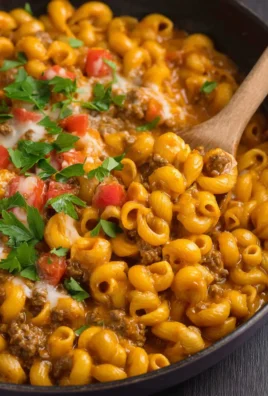
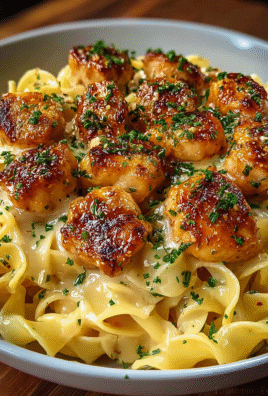
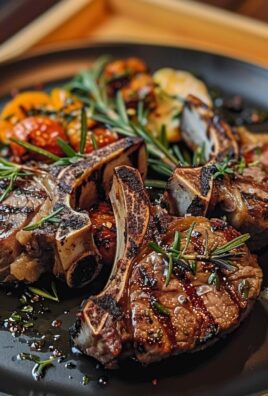
Leave a Comment